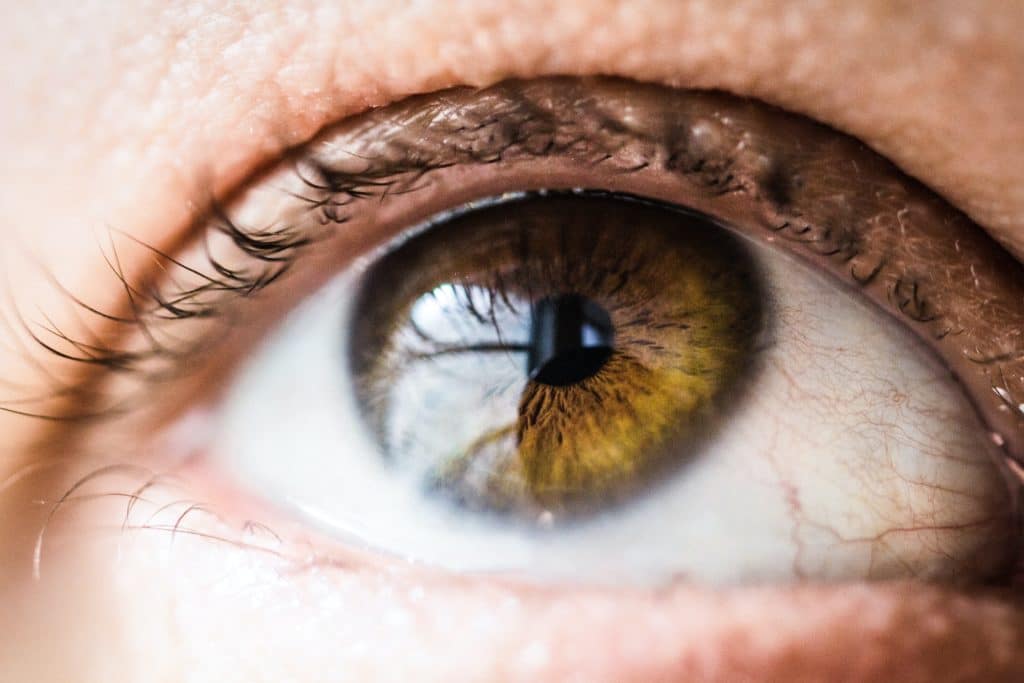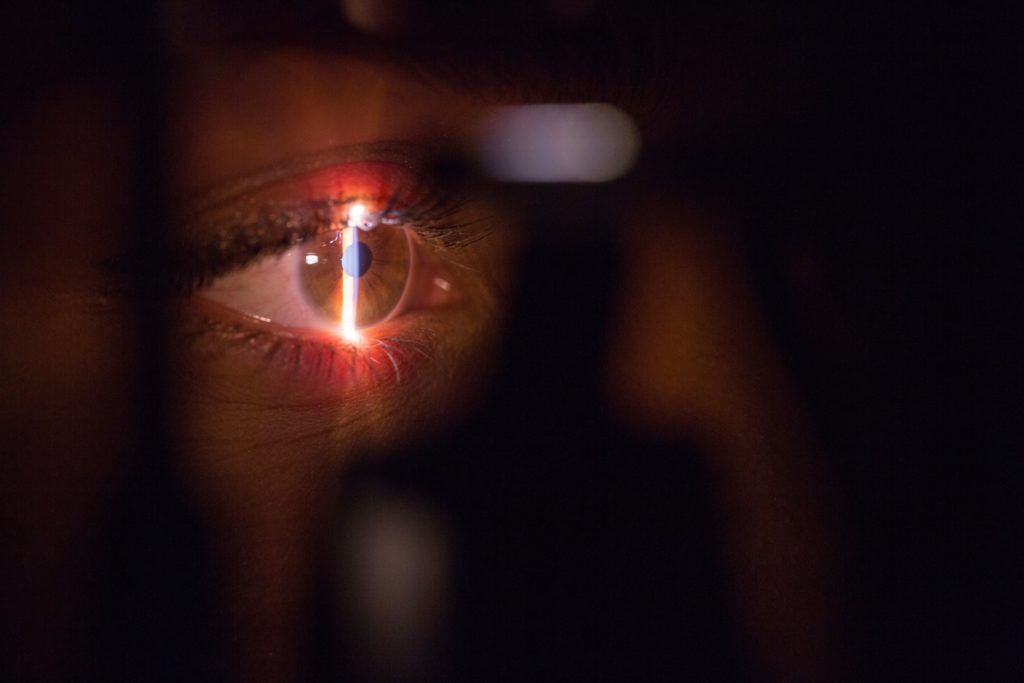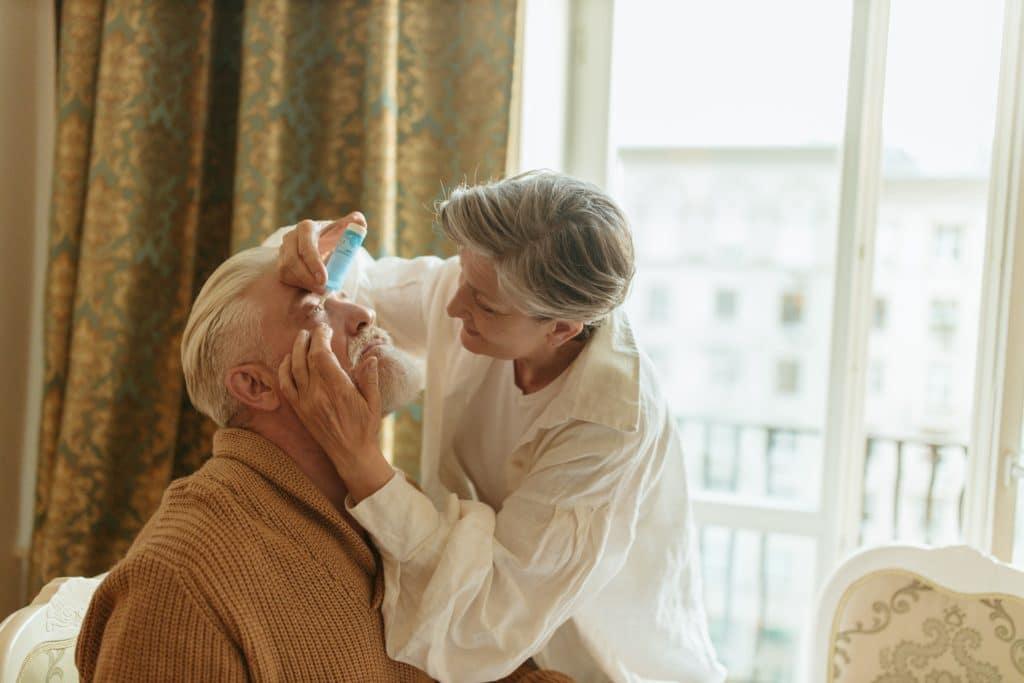If you’ve ever dealt with dry eyes, you know that the condition is irritating. When your eyes aren’t properly lubricated, you can experience various symptoms that leave you feeling uncomfortable. Affecting nearly 100 million people worldwide, dry eye syndrome is prevalent. So, how do you know you have dry eye syndrome, and what do you need to know if you do? Let’s discuss everything you need to know about dry eyes!
What Is Dry Eye Syndrome?
Dry eye syndrome, or dry eye disease, is a common condition that affects individuals who don’t have adequate lubrication for their eyes. This can occur for several reasons. For example, indoor heating systems in the colder months can reduce tear production and cause dry eyes. While most cases of dry eyes aren’t cause for a medical concern, dry eyes tend to cause extreme discomfort.
If you have dry eyes, your eyes may sting, burn, or itch. You may also notice excessive dryness and light sensitivity. Although dry eyes can be irritating, several at-home treatments provide relief.
What Are the Symptoms of Dry Eyes?
The signs and symptoms of dry eyes typically impact both eyes, but you may also experience symptoms in one eye. The most common symptoms include:
- Stinging, burning, or itching sensation
- Pain or irritation in or around the eyes
- Eye redness
- The feeling of something in your eyes
- Watery eyes
- Blurred vision
- Eye fatigue
- Light sensitivity
- Problems wearing contact lenses
What Causes Dry Eyes?
Dry eyes are caused when the healthy tear film is disrupted. This can occur for several reasons. A healthy tear film has three layers: fatty oils, aqueous fluid, and mucus. This combination of layers keeps your eyes lubricated. Dry eyes can occur when a problem arises with any of these layers. The most common causes of dry eyes are decreased tear production and increased tear evaporation.
Decreased Tear Production
When your eyes are unable to produce enough aqueous fluid, dry eyes can occur. The most common causes of decreased tear production include:
- Aging
- Vitamin A deficiency
- Allergic eye disease
- Thyroid disorders
- Rheumatoid arthritis
- Lupus
- Certain medications, including antihistamines, decongestants, antidepressants, blood pressure medication, and birth control
- Nerve desensitivity or damage caused by contact lens use or laser eye surgery
Increased Tear Production
In some cases, the oil film produced on the edge of your eyelids can become clogged and cause increased tear evaporation. The most common causes of increased tear evaporation include:
- Eye allergies
- Blinking less often
- Eyelid problems
- Preservatives in topical eyedrops
- Wind, smoke, or dry air
- Vitamin A deficiency
What Are the Risk Factors for Dry Eyes?
As with any condition, some individuals are at a higher risk of experiencing dry eyes. Risk factors include:
- Age– Tear production typically diminishes as you age. Dry eyes are more common in people over 50.
- Gender– Women are more likely to experience dry eyes than men. This is due to hormonal changes from pregnancy, birth control, or menopause.
- Vitamin deficiencies– Eating a diet low in Vitamin A or omega-3 fatty acids can leave you at a higher risk of dry eyes.
- Eyewear or surgery– Wearing contact lenses or undergoing laser surgery leaves you at a higher risk of experiencing dry eyes.
Can You Experience Complications with Dry Eyes?
While dry eyes aren’t typically a cause for concern, some patients may experience complications, including:
- Eye infections– Without adequate tear production, you are at an increased risk of contracting an eye infection.
- Damage to the eyes– When dry eyes are left untreated, they can damage the eyes. Severe dry eyes can lead to chronic inflammation, corneal abrasions, corneal ulcers, and vision loss.
- Decreased quality of life– Over time, dry eyes can make it difficult to perform daily activities, such as reading or computer work.
Dry Eye Treatment
Most cases of dry eye can be treated at home without medical intervention. However, if your symptoms are persistent and don’t resolve with lifestyle changes or at-home treatment, you should call your eye doctor to schedule an appointment.
Home Remedies
Most patients can manage dry eyes with a combination of lifestyle changes and home remedies. This includes:
- Over-the-counter eye drops– Artificial tears, ointments, gels, and other over-the-counter eye drops can significantly reduce the symptoms of dry eyes. There are several nonprescription products available at drugstores and grocery stores. Be sure to follow the product recommendations closely to avoid further issues. Talk to your eye doctor or pharmacist to find the best option for your symptoms.
- Hygiene– If eyelid inflammation is the cause of your dry eyes, consider changing your facial care routine. You can wash your eyelids frequently with mild soap and warm water. You can also apply warm compresses to the eyes to reduce inflammation.
- Humidifiers– Since one of the most common causes of dry eyes is indoor heating systems, adding a humidifier to your living environment can increase the moisture in your air. Be sure to follow cleaning recommendations carefully to avoid bacteria and mold growth.
- Alternative medicine– Adding omega-3 fatty acids to your diet can help reduce the symptoms of dry eyes. You can add omega-3 fatty acids through foods such as seeds, nuts, and fish. You can also add a supplement to your daily routine.
Medical Treatment
There are several medical options to treat patients who don’t find relief from home remedies or have more significant cases of dry eyes. Medical treatments include:
- Antibiotic treatment to reduce inflammation along the edge of your eyelids.
- Prescription eye drops to control cornea inflammation.
- Hydroxypropyl cellulose inserts that are placed between your lower eyelid and eyeball to lubricate your eyes.
- Tear-stimulating medications that come in pill, gel, or eye drop form.
- Closing your tear ducts to reduce tear loss.
- Use special contact lenses to protect the surface of the eye and trap moisture.
- Unblocking oil glands using warm compresses or thermal pulsation devices.
- Light therapy and eyelid massage for cases of severe dry eyes.
Dry Eyes Prevention Tips
If you experience the symptoms of dry eyes, the first step is to identify the cause. Once you know what caused your dry eyes, do your best to avoid those situations. You can also try the following tips:
- Avoid air from blowing in your eyes. Sit at a distance from fans, air conditioners, and heaters. You should also keep blow dryers from blowing directly into your eyes.
- Use a humidifier to add moisture to dry indoor air.
- Wear eye protection when venturing outdoors. This is particularly important in winter months or during windy weather.
- Give your eyes a rest. Simply close your eyes for a few minutes or look away from your computer screen to increase tear production. Take frequent breaks when reading or working on the computer for extended periods.
- Create an effective workspace that doesn’t add to eye fatigue. Position your computer screen below eye level. Avoid significant screen glare. Make sure you frequently blink to help slow the evaporation of tears.
If you are suffering from Dry Eyes, it is best to contact your eye doctor to get an in-person assessment.
If you want to see if you have the symptoms of Dry Eyes, take our simple 5 question Dry Eye Quiz. This quiz helps grade your symptoms and helps ensure you are using the right products to help find relief.





